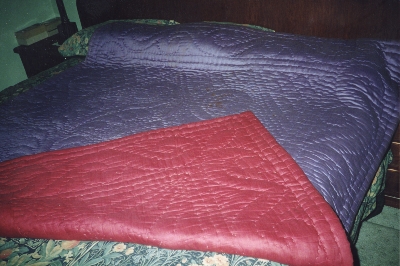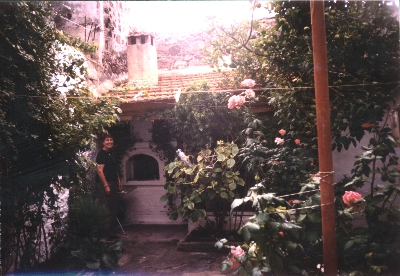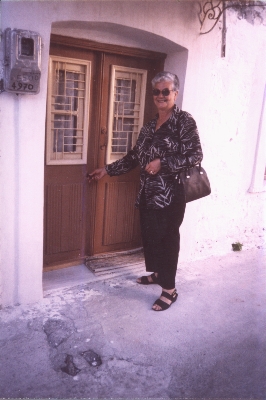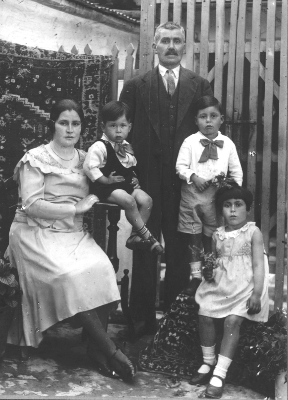Quilt No.746DS - Della Savvas

2000 x 1810mm
The name of the maker is unknown as this quilt was made by the village quilt maker in Aghia Paraskevi, island of Lesvos, Greece c.1920. It was made for the present owner's mother-in-law, Efstratia Savvas, who gave it to Della in 1971 after her marriage to Efstratia's son Louis. It is not used now.
" Della's Paploma
Della Mihaillaros was only eighteen when she left her Greek village of Aghia Paraskevi, on Mytilini (Lesvos), to come to an Australian Village - Ariah Park in south west NSW. She and her brother Nick were coming to join their other brother, Stan Mitchell who had come to Australia a few years earlier and who, like so many of his compatriots, worked long and hard and in a short time had acquired his own cafe. Della spent her first few Australian years working in the 'White Rose', before marrying Louis Savvas (also from Aghia Paraskevi) and moving to Broken Hill where they too bought their own business.
Unlike many other Greek Australian women, Della did not bring a 'paploma' (quilt) with her to Australia. Instead her mother-in-law, Efstratia (Tsohaderi) Savvas gave her 'paploma' to Della as a gift, in 1971. It had been part of Efstratia's 'prika' (dowry), made probably around 1920, with locally grown and woven cotton. Della remembers the cotton growing around Aghia Paraskevi, and how it had to be picked when the sun was on it, so that the cotton bolls would be large and fluffy! She also remembers how some of the other fabrics were made - the woman who was the local 'silk maker' would collect the silk worm cocoons of fine thread which she then spun and dyed to make beautiful silk fabric. Flax (linari) was also grown; then picked, processed and hand-woven into linen by the local women.
Sadly most of these lovely old handcrafts have all but disappeared now, as has the traditional 'argalio' (loom). Each summer the argalio would be assembled outside in the courtyard where the weaving would be done during the fine weather. In the winter the loom was dismantled and packed away, then olive picking took over as the main winter activity. Olives and olive oil were essential to every Greek household, as they are to this day.
Della had an Australian connection long before anyone in the family migrated - her name is actually 'Adelais', after the city of Adelaide, S.Australia. An uncle, Stelio Christofidi had been reading about Australia at the time that Della was born! In leaving her village in 1952 Della left behind her parents, Maria and Panagioti, and two sisters, Anna and Camelia - all part of the painful migration process, so familiar to so many Australians. She and her husband Louis have worked hard and established themselves in their new 'hora' (country). They have three children: Perry, Maria and Esther; and two grandchildren John and Adele."
[Written by Lula Saunders; adapted from interview 8/7/00 for the National Quilt Register]



Related Quilts:
1800 x 1225mm
1827 x 1423mm
2010 x 1920mm






